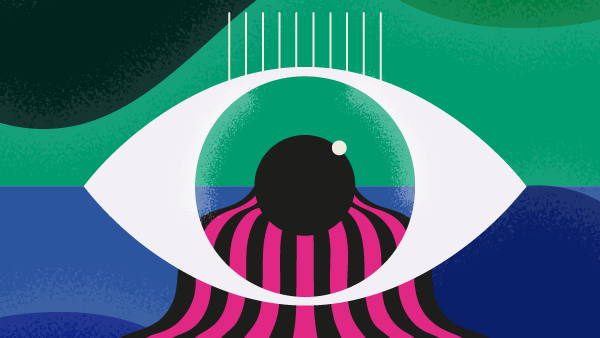You are viewing 1 of your 3 articles before login/registration is required
Contact Confidence
Practitioner tips for introducing multifocal lenses to presbyopic patients
The onset of presbyopia can be discouraging for those who already wear glasses or contacts, and it can be surprisingly alarming for emmetropes who have never previously needed vision aids. Fortunately, there are great contact lens options available to correct presbyopic vision at all distances. Though some contact lens options – like monovision or single vision contact lenses with overlay reading glasses – can seem like acceptable options for some patients, multifocal contact lenses offer the best overall visual experience. In fact, it has been shown that when patients try monovision and multifocal options, they subjectively prefer multifocals to monovision. This preference is most likely because – similar to comparing progressive addition spectacle lenses to a flat-top bifocal – multifocal contact lenses offer clear vision at all distances and allow the patient to maintain stereopsis. Thanks to continual advances in lens technology, today’s market now offers a multifocal option to address nearly every contact lens wearer’s presbyopic needs.
In my practice, multifocal wearers are among my happiest contact lens wearers. I have found that fitting a multifocal contact lens doesn’t require that much more time, energy, or critical thinking than any other type of contact lens. Read on for my tips on how to be successful with this modality.
Start early
Addressing presbyopia before it becomes a major visual problem allows contact lens wearers to seamlessly ease into multifocal contact lens wear without significant adaptation issues. Even before patients experience sustained blur at near, symptoms like headaches and eye strain can be a sign that they are approaching presbyopic vision changes, and could benefit from multifocal contacts. An emerging presbyope in their late 30s or early 40s will adapt easily to low-powered multifocal contacts, and then be able to more seamlessly transition to higher add powers as their presbyopia progresses.
For emmetropes or low-hyperopes presenting for the first time and beginning to panic about their vision, multifocal contacts can be incredibly impactful while still easy to fit. Generally speaking, these patients have never worn glasses and can be reluctant to start; they also often haven’t had an eye exam in many years. By giving them an option to remain spectacle-free early on in their presbyopic progression, you gain a loyal patient for the practice – and one who will not only refer others but also be getting regular eye care to screen for ocular health issues beyond the changing lens.
Follow the fitting guide
When multifocal lenses first entered the market, practitioners often received a fitting set and were left to their own devices to figure out how to fit the lenses. Thankfully, times have changed since then – because every multifocal brand is different, contact lens manufacturers have invested time, resources, and research to develop fitting guides that lead you to success with minimal troubleshooting. Though most fitting guide suggestions seem pretty straightforward, almost every guide contains a tip or instruction that would likely not be what a fitter might intuitively move toward in their own troubleshooting process. Each lens design is unique and the manufacturer has determined that for their unique design, certain strategies are more likely to result in success than others. These fitting guides streamline the process so that the first lens you choose is typically the one the patient takes home.
Educate and follow-up
The first multifocal pair you trial is usually a good start, but because such a lens introduces a whole new optical system to the eye and brain, the fitting process requires follow-up care and checking in after adaptation. In my experience, a first multifocal contact lens fitting is not the time to encourage an immediate annual supply purchase; you really can’t judge whether a small change in the prescription or add power will be beneficial until the patient has had a chance to adapt and wear the lens in their natural environment. For this reason, plan for a multifocal contact lens fit to be a two-step process: the initial fit and then a second visit to fine-tune the vision.
Though the multifocal fitting process involves advanced optics, it’s also influenced by the patient’s attitude toward the process and their understanding of the lenses. At the initial fit, it’s important to take an additional minute or two to explain how multifocal contact lenses work and what the patient will likely experience during the adaptation period. This helps the patient be more amenable to any blur or negative experience they might have during that adaptation process, instilling confidence in the fitting process and making them excited to move forward.
Do better than “fine”
Contact lens technology is constantly evolving, and so it’s important to let patients know what new options are available, even if they are “fine” with whatever option or modality they currently have. Recently, I saw a patient who had been wearing an older multifocal brand for several years with success but was open to trying something new. We fitted her in the new Acuvue Oasys Max 1-Day Multifocal, which has two new technologies: TearStable technology optimizes the distribution of their internal wetting agent, resulting in a lower evaporation rate; and OptiBlue filters out 60 percent of blue violet light. The lens helps reduce light scatter and improves visual quality, which can sometimes be a complaint of patients wearing multifocal contact lenses. I suggested to my patient that she should try it out before purchasing another annual supply of her habitual lenses. Sure enough, she called back and said, “Everything looks just a little bit better and is a little more comfortable.” We’ve taken that patient from fine to fabulous – and hopefully extended her years of successful contact lens wear.
Many practitioners shy away from presbyopic contact lens fitting, viewing it as a lens category that is too much work without much success. Although multifocal lenses are considered specialty lenses, they have evolved to be easy to fit. Today, they are a great way to offer specialty contact lens care to a large population of patients – and to help differentiate your practice.
The New Optometrist Newsletter
Permission Statement
By opting-in, you agree to receive email communications from The New Optometrist. You will stay up-to-date with optometry content, news, events and sponsors information.
You can view our privacy policy here
Most Popular
Sign up to The New Optometrist Updates
Permission Statement
By opting-in, you agree to receive email communications from The New Optometrist. You will stay up-to-date with optometry content, news, events and sponsors information.
You can view our privacy policy here
Sign up to The New Optometrist Updates
Permission Statement
By opting-in, you agree to receive email communications from The New Optometrist. You will stay up-to-date with optometry content, news, events and sponsors information.
You can view our privacy policy here







